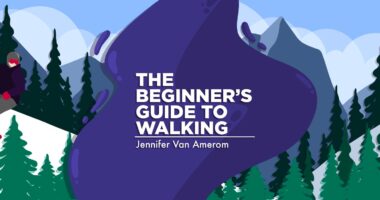Why hope is important in managing my NMOSD
How I got through a challenging New Year's Eve in the emergency room

I’ve always been a superstitious person. It started by listening to tales about my oma (grandma), who was a believer in the dark arts. My greatest memory of her is from one evening when she called everyone to say goodbye, knowing she would pass away the next day. And she did.
As a child, I often played with a Ouija board, which told me I’d marry a Michael. And I did.
The only psychic I’ve ever visited was able to see neuromyelitis optica spectrum disorder (NMOSD) and a daughter years into my future.
Perhaps these were all coincidences, but they’ve offered me some hope in moments when I wasn’t sure of my future. I also like the idea that if I follow my superstitions, then perhaps I have some influence over my life, which satisfies my desire to control everything in my surroundings.
So it follows that I am superstitious about New Year’s Eve and believe that the way we spend the last day of the year can indicate how the upcoming year might unfold. That is why I was in absolute disbelief and dismay when I found myself in the emergency room that day seeking medical attention.
NMOSD patients often struggle with knowing when to go to the ER. It was clear this time that I needed to go when my headaches became unbearable and I started to vomit and hiccup.
As I sat in the ER hooked up to an IV to receive Solu-Medrol (methylprednisolone), I couldn’t help but feel angry. Being sick gets old fast, and because it was New Year’s Eve, I was frustrated that this was my life. I was alone in the ER because I knew what to expect; it’s always the same movie, and I hate being the main character. My family supports me in other ways, so I don’t need anyone to sit beside me and hold my hand. I sent text updates to them instead, and they responded with words of encouragement.
In the background, I could hear an overwhelmed father asking for his lab results over and over so he could get home to his family. A couple was professing their undying love for each other, promising they’d get through this, and a woman was desperately trying to get through to her mother about an issue they disagreed on. My anxiety was at an all-time high. All I wanted was to get home and celebrate New Year’s Eve with board games and expensive champagne, as I had planned.
A glimmer of hope
That’s when my ER doctor returned.
“I know you’ve been through this several times before, so it’s not a surprise that neurology wants you to receive a five-day pulse of Solu-Medrol,” the doctor said. “The good news is that your MRI came back and there aren’t any new lesions. This means that your symptoms are exacerbated by something else, so we hope the Solu-Medrol will calm them down.”
There it was: hope.
While moments before I had felt angry and frustrated with my reality, it was like my doctor had waved a magic wand over me and, suddenly, things weren’t so dire. NMOSD patients deal with a lot of uncertainty. We develop a high pain tolerance and tend to be heavily medicated. But despite all the chemicals in our bodies, we somehow still manage to regulate our emotions.
So how do we carry on?
While hope and superstitions might not be real, in our darkest moments, they can help us push through to another day. I know I’ve been hoping for new treatments that will make life easier and less painful. I even hope for a cure one day. And even though I spent the last moments of New Year’s Eve with an IV plug in my hand, I still feel like I satisfied my superstition.
We must be careful that we don’t hope for unrealistic outcomes, but little glimmers of hope, like an unremarkable MRI, help us survive with NMOSD.
Note: Neuromyelitis News is strictly a news and information website about the disease. It does not provide medical advice, diagnosis, or treatment. This content is not intended to be a substitute for professional medical advice, diagnosis, or treatment. Always seek the advice of your physician or other qualified health providers with any questions you may have regarding a medical condition. Never disregard professional medical advice or delay in seeking it because of something you have read on this website. The opinions expressed in this column are not those of Neuromyelitis News or its parent company, Bionews, and are intended to spark discussion about issues pertaining to neuromyelitis optica spectrum disorder.








Leave a comment
Fill in the required fields to post. Your email address will not be published.